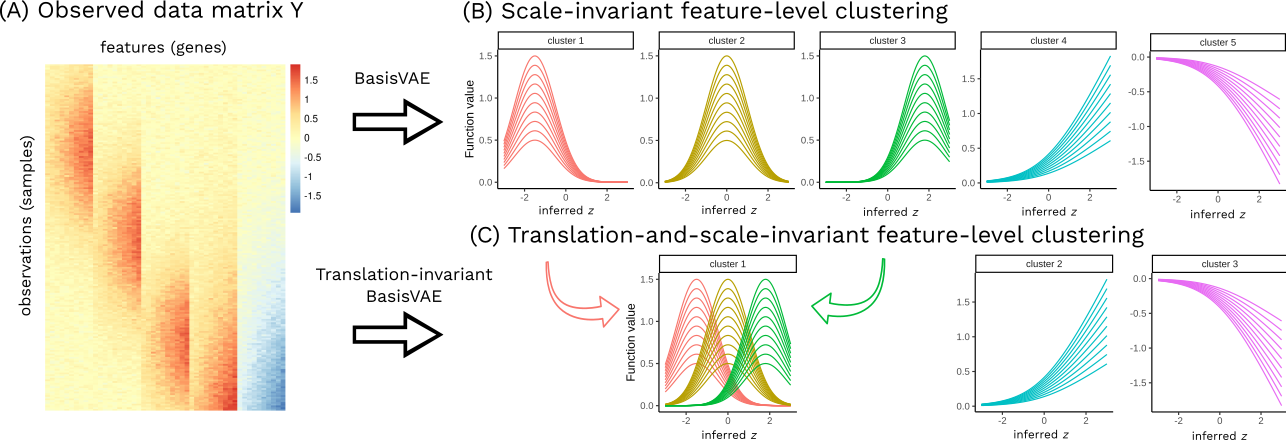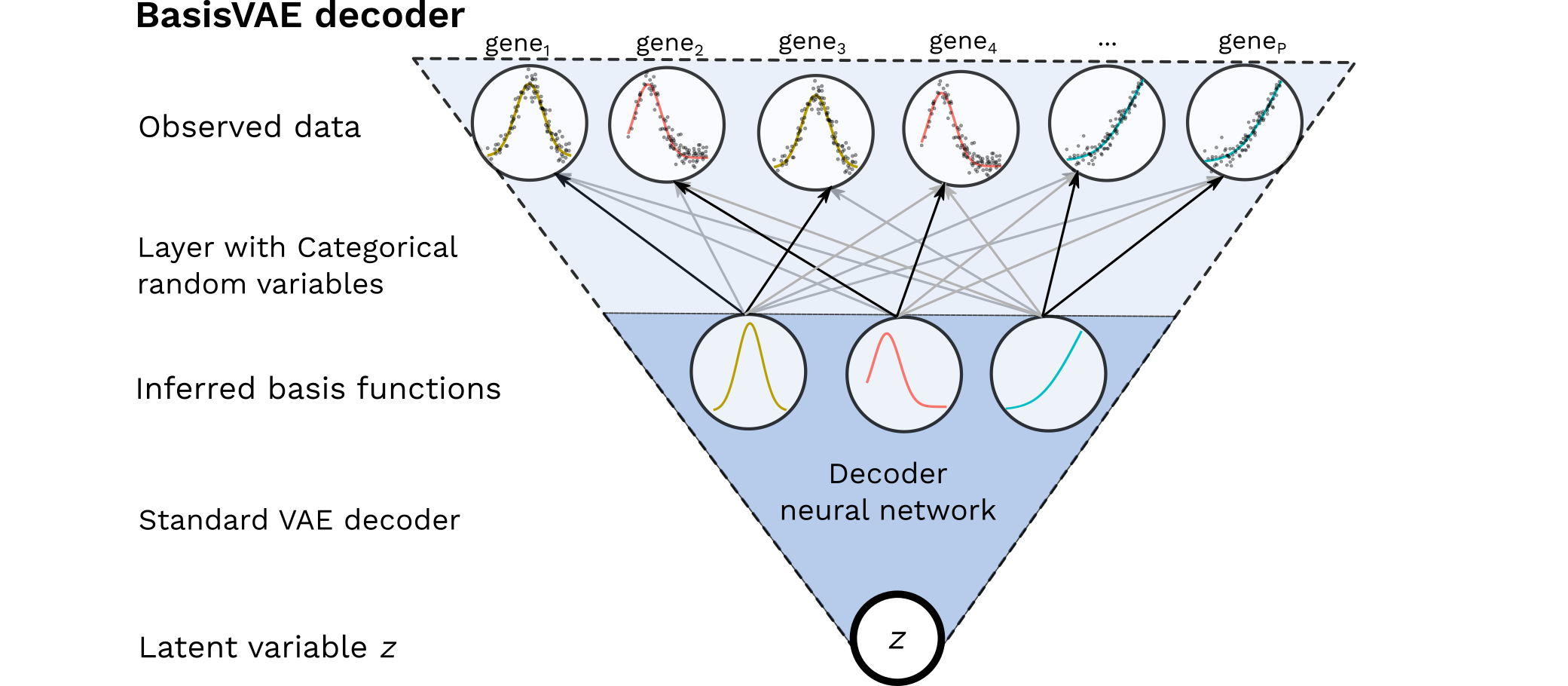BasisVAE
This is the PyTorch implementation of our AISTATS 2020 paper BasisVAE: Translation-invariant feature-level clustering with Variational Autoencoders
Summary
It would be desirable to construct a joint modelling framework for simultaneous dimensionality reduction and clustering of features. Here, we focus on embedding such capabilities within the Variational Autoencoder (VAE) framework. Specifically, we propose the BasisVAE: a combination of the VAE and a probabilistic clustering prior, which lets us learn a one-hot basis function representation as part of the decoder network. This has been illustrated below. Furthermore, for scenarios where not all features are aligned, we develop an extension to handle translation-invariant basis functions.
Illustrations on synthetic data
We illustrate BasisVAE model fitting on the following toy data set that has four groups of features:
Here is the inferred scale-invariant BasisVAE:
and here we additionally allow translation invariance
Demo notebook
See this Colab notebook for a toy example demo.
Implementation details
The core component of BasisVAE is its specialised decoder. See decoder.py for details about its usage and implementation. Our current implementation supports the following likelihoods Gaussian, Bernoulli, NB, ZINB.
Installation
pip install git+https://github.com/kasparmartens/BasisVAE.git




